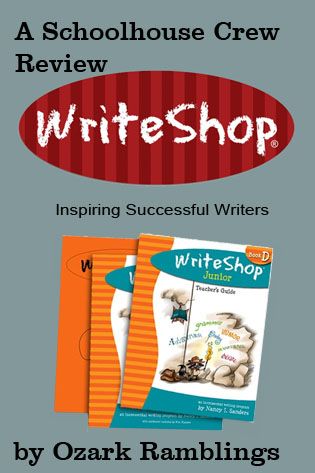
Two years ago, my son and I were introduced to WriteShop. Schnickelfritz really enjoyed the 15 minute lessons and the program sanctioned parental help so he was more than willing to step up a level and try their WriteShop Junior: Book D Set. It is available in a physical format or an eBook format. We downloaded three PDF Files: the Teacher’s Guide, the Student Activity Pack, and the optional Time-Saver Pack.
The Junior writing program uses letters rather than grades to separate levels. Although Set D is recommended for grades 3-4, it can also be used with reluctant writers (like my son) in grades 5-6 without them realizing they’re “behind.”
The Teacher’s Guide ($45.95 physical copy, $35.50 eBook) is 278 pages and contains supply lists, an overview of how to teach each activity day as well as specific instructions for each lesson,ideas for setting up a writing center, etc. There two different lesson plan schedules—the standard model takes three weeks per lesson with activities three times per week for a 30 week school year. If for some reason you want to move through the curriculum at a faster pace you can use the daily plan and finish in 20 weeks.
The Student Activity Pack ($45.95 physical copy, $35.50 eBook) has 66 pages of writing worksheets, editing checklists, printables for games, etc. Also included are the pages needed to assemble the Fold-N-Go folders. If you opt for the physical copy, you’ll need one per student. With the eBook, you may print as many copies as needed for your family.
The Time-Saver Pack ($14.95 physical copy, $11.50 eBook) is only 24 pages long. It contains printables for certain activities to save you the trouble of making your own from scratch. For example, instead of writing my own sentence starters and characters on 16 pieces of paper I can print and cut out their version. You just have to judge which is more valuable—your time or your money.
Three lessons focus on a specific writing assignment: writing an invitational letter, expository writing, and writing a Haiku poem, but most of the lessons focuses on a different genre of fictional writing.
- Letter of Invitation
- Humor
- Adventure
- Science Fiction
- Mystery
- Haiku
- Folktales
- Historical Fiction
- Personal Narrative
- Expository Writing
Each lesson is broken into eight Activity Sets
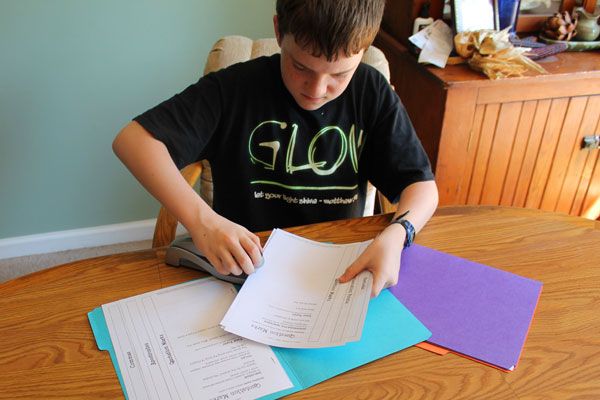
1. In Fold-N-Go Grammar, the student builds two reference tools: a 6-page file folder book and a bookmark (which I chose to laminate) on a variety of grammar subjects: Punctuation Marks, Self-Editing, Nouns, Pronouns, Verbs, Adjectives, Adverbs, Prepositions, Capitalization, References. This activity set also includes four options of printables for the student to keep a Reading Journal.
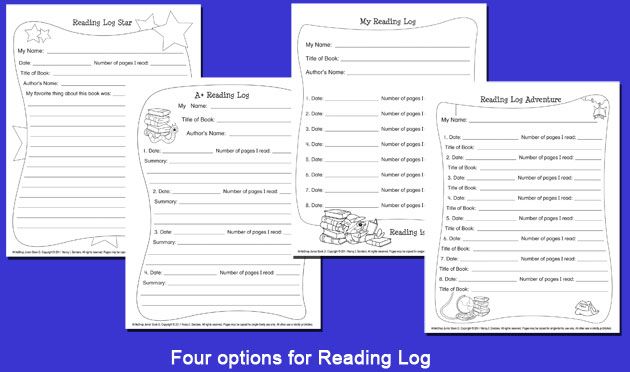
2. Pre-Writing Activities gently introduce the student into the subject, often in the form of a game. For lesson 1 we had to turn over slips of paper (date, salutation, body, closing, signature) to mix-match a complete letter. This activity set also provides a script for parents to Model and Teach the writing assignment. 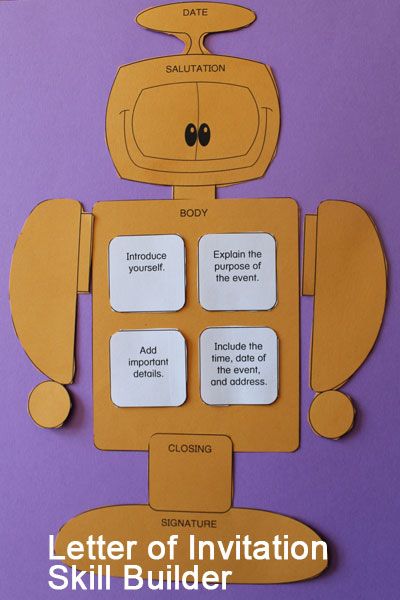
3. Skill Builders give your students the opportunity to learn new ways to enhance their writing or reinforce what’s been learned in the Model and Teach activity. It’s not necessarily a writing activity—to the right you can see a robot skill builder we assembled to reinforce learning the parts of a letter. Kids will put pencil to paper during Journal Writing Practice. There are writing prompts to give students a direction to go or they can keep a daily log, write dreams & goals, etc. This is mostly to give their mind and hand exercise and isn’t graded.
4. Every lesson includes a Brainstorming printable to help students organize their thoughts before the writing project. My son felt this so helpful. If I just gave him a blank piece of paper and said “Write a mystery story” he’d get a case of writers block bigger than the iceberg that struck the Titanic. This way we could work together on characters, setting, and general flow of the story first.
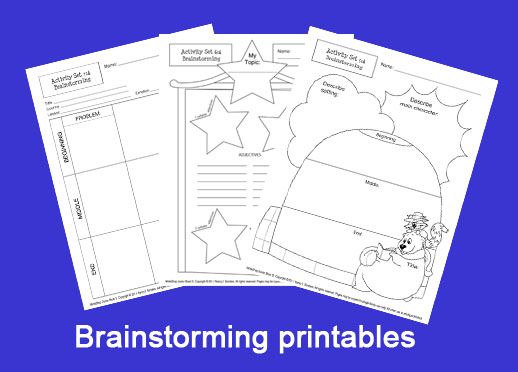
5. Kids will use their Brainstorming notes as the foundation of the Writing Project. This is really the first draft and parents are encouraged to give as much help as needed, even to the point of writing down what the child dictates. In the Teacher’s Guide is a whole page on “How Much Help” that talks about frustration or complaining about his hand hurting is my cue to step in with or step up. The goal is ease the child into writing and make it an activity they look forward to, not push or force them into drudgery. This activity can even be tailored with Smaller Steps for struggling writers or Flying Higher for advanced students.
6. For Editing & Revising, the student has a check-off list to remind him to look for grammar, punctuation, and spelling errors (the bookmark you make for proofreading/editing marks also comes in handy here). Schnickelfritz edits the work first and then I can go over it. It really helped to explain to him that this step was “editing” not “correcting” and that every writer goes through this step to make their work better. I was the same way at his age though and insisted I wrote it down just the way I wanted the first time.
7. Publishing the Project is creatively enhancing the final copy of the Writing Project. It can mean printing the work on fancy paper, sharing a humorous story at dinner, or pasting the story in a decorated manila file. Sometimes Fritz was ready to just have the writing be over with after he’d finished rewriting it, but the next day I’d let him decorate the paper and he’d show off the finished work with pride.
8. Evaluating Your Child’s Work is really for parents/teachers. The printables help me “grade” the writing project based on content, mechanics, and self-editing skills.
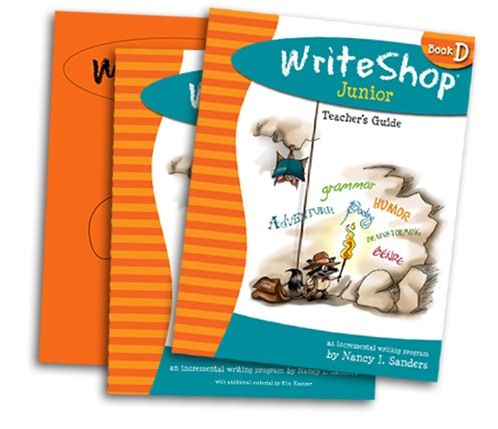
You’ll need copy paper and some cardstock to print out the student workbook pages and activities (I transferred the Teacher’s Guide to my Kindle rather than print it out). You’ll probably have all the other supplies needed –rubber bands, manila folders, yarn, coins, etc. Optional projects may mean a trip to the store for scrapbooking supplies . A complete list of items broken down by lessons is in the Teacher’s Guide.
Writing is my son’s weakest skill and the area we have the most frustration during our school day. I have to admit, I get less complaining when we use Write Shop. Short lessons are over before the melt downs come, the every other day schedule means some days he doesn’t have to worry about writing at all (he does write on those off days but just the fact it isn’t its own subject gives him a great deal of satisfaction). Yes, there are times I think he’s capable of harder work, but maybe I need to lower my expectations for now and focus on developing his love of writing rather than his skills.



No comments:
Post a Comment